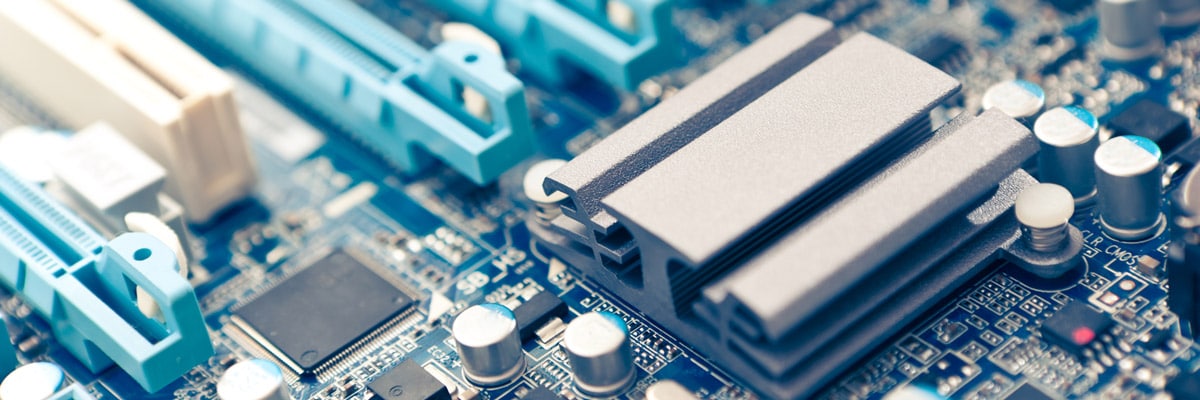Over the last year, we have focused our efforts on internal controller development in our consumer SSDs. It was an ambitious, but necessary, project to set ourselves apart in an industry crowded with external controllers. And thanks to the incredible efforts of our global teams, we achieved the results we were looking for. Doing so has led to many breakthroughs in both power and performance, including our award-winning WD_Black® gaming drives. As a leader, I couldn’t be more proud of our teams’ collaboration, dedication, and execution.
But, let’s take a step back for a moment. Although this new internal controller appears like “one” picture, it is in fact a set of dots that we seamlessly weave and bring together. In this blog, I’ll talk about the underlying platform strategy that’s giving Western Digital vertical integration across its products and a strong competitive advantage.
Building a Tech Platform with Vertical Integration

The primary idea of a successful technology platform is to have an intellectual property (IP) technology foundation — upon which we can build multiple firmware stacks (usually derivatives of one another) for various product configurations and/or different NAND flash technologies, with each stack defining a product configuration.
Underlying this platform’s capability is the core ASIC (Application-Specific Integrated Circuit), which is also known as an SOC or System-on-a-Chip (named due to its highly integrated nature). If we think of the final product as a living organism, the highly complex system within consists of a collection of many complex, autonomous, interlinked “organs” working together as they perform different functions.
The collection of core ASIC IPs are each built with literally millions of transistors and a complex intelligent fabric that seamlessly enables each element to communicate, coordinate, exchange and process data in a highly efficient and integrated manner.
The next layer up is where our product teams apply specific firmware (also known as “low-level software”) and systems engineering technologies to configure and operate the ASIC hardware, implement operations required to work with specific flash technologies and process data in compliance with various host protocols and system requirements.
The choice of flash technologies, protocols and configurability to address various market segments and power-performance-cost matrices defines a platform. Every platform is architected with a balance (and trade-offs) between features, cost and flexibility. We can apply a platform to any number of products.
From Integrated Platforms to Storage Products
Today, we are applying this very powerful platform and its extensions in a wide variety of other products, including NVMe™ SSDs for both data centers and consumers.

For example, our internal ASIC controller platform drove much of our success on WD_Black SSD products and represented several “firsts” for Western Digital:
- It was our first internal PCIe (Gen3) NVMe controller.
- It was our first 28nm technology ASIC.
- More than 20 new complex ASIC IPs were built from the ground up for the very first time — a huge uplift for any semiconductor company as a first-generation effort.
- WD_Black had close to 100 million transistors and about 15 megabytes of on-die SRAM (memory).
In addition, we now have integrated data storage platforms across mobile, embedded, and enterprise for both HDDs and SSDs.
This is a huge change from where we were historically.
Why? Well, we depended on third-parties to provide a lot of our controllers. While we had success using our own controllers for some products, 3rd party solutions had less flexibility than we preferred to deliver the best possible product.
By collaborating across our ASIC and Client engineering departments, we used vertical integration to develop our own controllers and overall solutions that are highly competitive in both cost and performance.
New Kid on the (Core ASIC) Block
Complex ASIC technology requires long development timelines; development work typically starts much sooner than market requirements solidify. In this case, our development process took about three years. Throughout the process, the core ASIC technology IPs continuously focused on innovation and self-disruption as we moved along our internal technology roadmap.
Now, building the controller internally helps us differentiate our products externally with highly-optimized firmware and hardware instead of generic solutions. We gain valuable efficiencies by building multiple variants across segments that leverage and re-use ASIC and firmware systems.
As I mentioned before, this internal controller enables vertical integration in consumer SSDs. Our first internal PCIe NVMe client gave us the ability to match head-to-head with our competition. In many metrics, we gained a leadership position and made a tremendous business impact. It was especially gratifying that our competition was in its 4th or 5th generation of ASIC platform development at the time. Yet, we went from newbie to one of the industry leaders with our very first attempt!
Vertical Integration Today, Continued Innovation Tomorrow
Today, we’re using our own controllers in multiple product lines in various segments, giving us a leadership position in the industry and a significant competitive advantage. Vertical integration gives us greater control over the final product, greater quality, lower cost and more flexibility in our roadmaps. The video below shows how we are innovating at the boundaries of data infrastructure.
Our platform capabilities are essential for both attaining long-term success with hard drive and solid state media, while meeting our vertical integration goals. By successfully developing our own controllers, we have significantly strengthened our technology, established more favorable cost structures and set the foundation for even greater customer wins.
A big thanks to our very talented ASIC IP and SOC teams across the globe working hand-in-hand with the product and business teams to define and develop our next generation of controllers. This is a tremendous technical achievement for Western Digital. And, if you thought that was the finale, stay tuned for future updates about the closing element that comes together and makes it all happen!
More about our NVMe SSDs
